1. Introduction: The Crisis of Remote Site Accommodation
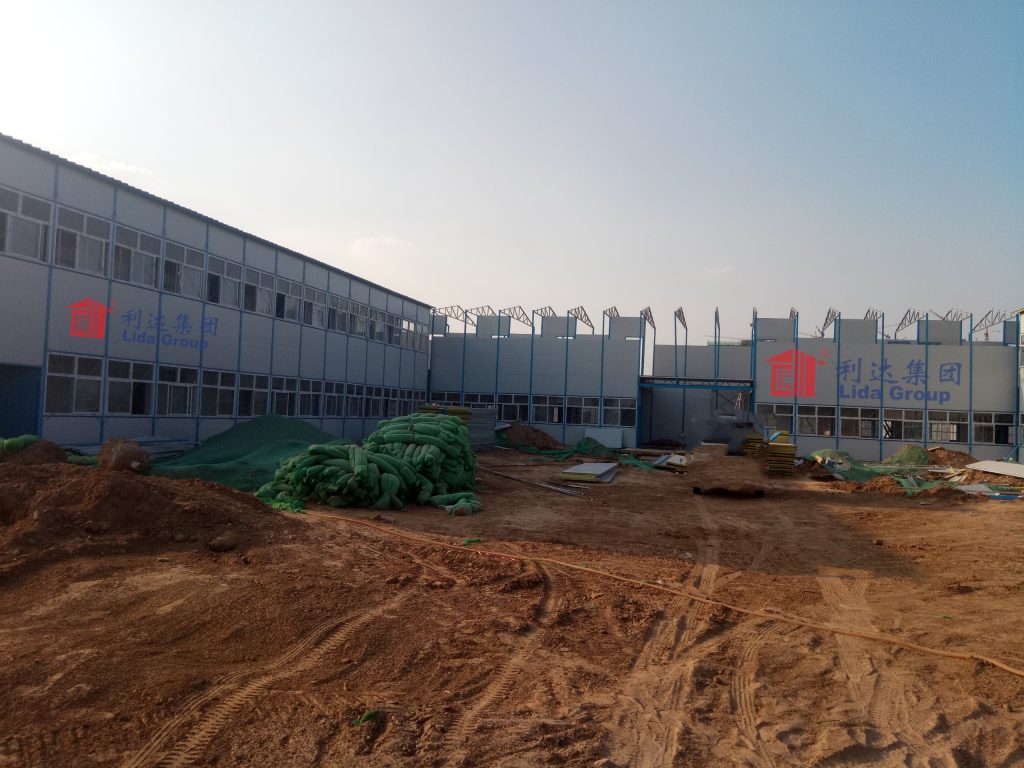
2. Lida Group: A Leader in Remote-Focused Prefab Innovation
2.1 A Legacy of Adapting to Remote Needs
2.2 The Core of Lida’s Solution: Sandwich Panel Technology
- Exterior cladding: A thin, durable layer of galvanized color steel (0.4–0.6mm thick) treated with anti-corrosion and UV-resistant coatings to withstand extreme weather.
- Insulation core: A middle layer of high-performance material (rockwool, polyurethane, or recycled EPS) chosen for thermal efficiency, fire resistance, and water repellency.
- Interior lining: A lightweight, easy-to-clean layer of plywood or fiberboard that meets low-VOC (volatile organic compound) standards to ensure healthy indoor air quality.
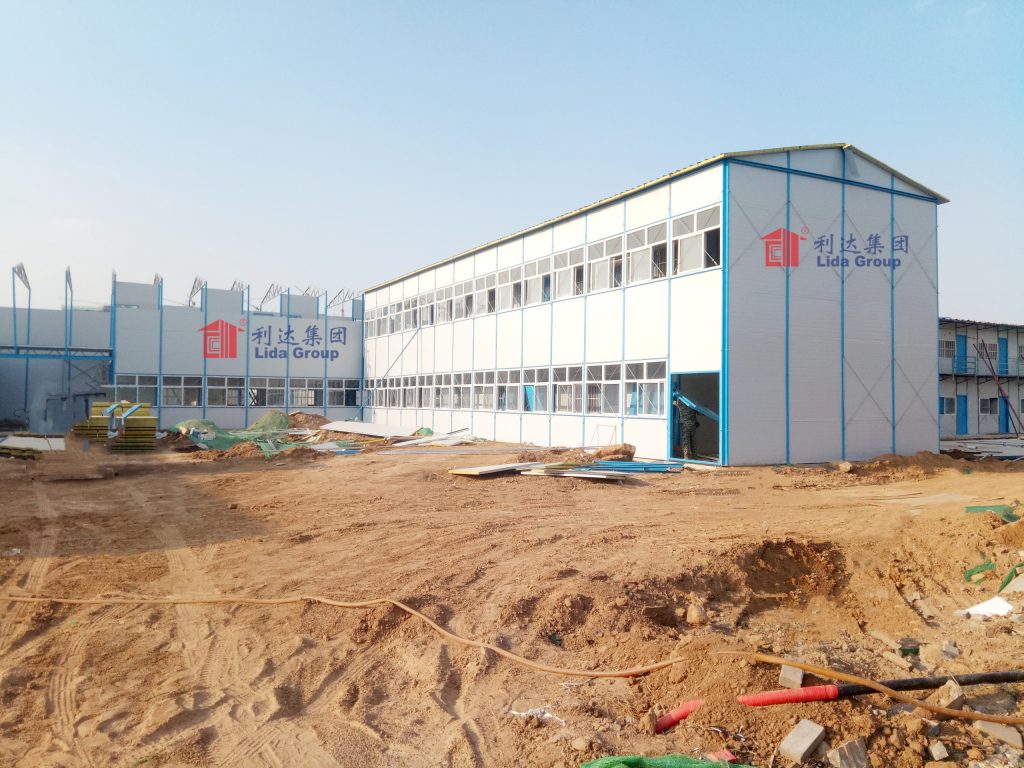
3. Low-Cost Advantage: Making Superior Remote Accommodation Accessible
3.1 Material Efficiency: More Value, Less Waste
- Recycled and Localized Materials: Up to 80% of the steel used in exterior cladding is recycled, reducing raw material costs by 20% compared to virgin steel. For regional projects, Lida sources interior materials (e.g., plywood in Africa, fiberboard in Southeast Asia) locally, cutting import fees and shipping costs.
- Precision Material Sizing: Using CNC (Computer Numerical Control) machines, Lida cuts panels to exact dimensions—eliminating on-site trimming (a major source of waste in traditional construction). Waste from production is less than 2%, compared to 15–20% for manual prefab assembly. For a 100-unit project, this saves \(12,000–\)15,000 in material costs alone.
- Multi-Purpose Components: Many parts of the house serve dual functions. For example, the steel frame that supports the roof also acts as a mounting point for electrical fixtures, eliminating the need for separate brackets. This reduces the number of components, lowering both production and shipping costs.
3.2 Modular Production: Scaling Without Scaling Costs
- Robotic Assembly: 75% of panel assembly is done by robotic arms, which work 24 hours a day with minimal error. This reduces labor costs by 35% and ensures consistent quality—critical for remote sites where defects are hard to repair.
- Standardized Designs with Customizable Options: Lida offers 10 standard house sizes (from 20m² single units to 120m² multi-room complexes) but allows customization of insulation, fixtures, and layout. Standardization keeps production costs low, while customization ensures the house meets site-specific needs (e.g., extra insulation for cold climates, solar panel mounts for off-grid sites).
- Just-In-Time (JIT) Inventory: Materials are delivered to the production line exactly when needed, reducing storage costs and minimizing waste from expired or damaged stock. JIT production cuts inventory expenses by 25% and speeds up order fulfillment—critical for remote projects with tight timelines.
3.3 Logistics Optimization: Cutting Remote Shipping Costs
- Flat-Pack Packaging: Each house disassembles into flat, stackable components. A single 40ft shipping container can hold 8 units of Lida’s 20m² house—compared to 2 units of traditional pre-assembled modular houses. This reduces shipping volume by 75%, cutting transportation costs by 60%. For example, shipping 100 Lida houses to a mining site in Mongolia costs \(45,000—compared to \)112,500 for pre-assembled units.
- Lightweight Construction: The use of light steel frames and thin, high-strength materials keeps the total weight of a 20m² house at 800kg—30% lighter than traditional wooden huts of the same size. This means more units can be transported per truck or cargo plane, further reducing logistics costs.
- Simplified Customs Compliance: Lida provides standardized documentation (including CE and ISO certificates) for all shipments, avoiding delays at border crossings—common in remote regions with strict import regulations. For a project in the Democratic Republic of Congo, this reduced customs clearance time from 3 weeks to 5 days.
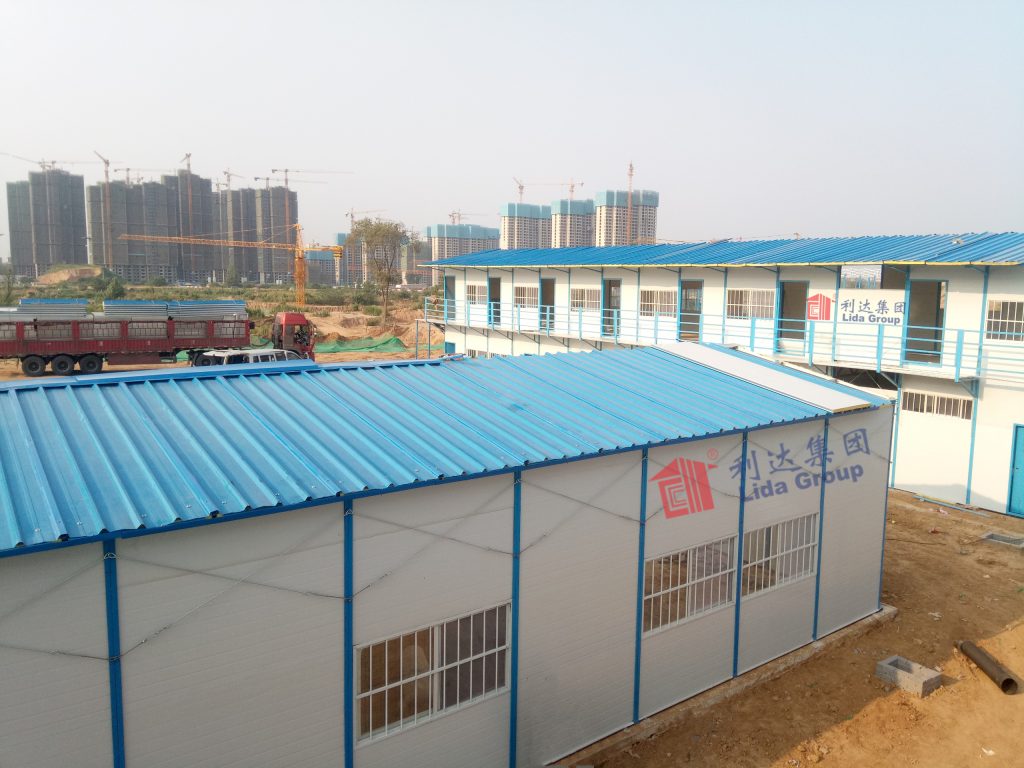
4. Superior Living Spaces: Redefining Remote Accommodation Standards
4.1 Thermal Comfort: Beating Extreme Temperatures
- Insulation Options for Every Climate:
-
- Rockwool Insulation (120kg/m³): Ideal for hot, dry regions (e.g., Australian Outback). It reflects solar heat, keeping interiors 15–20°C cooler than outside temperatures. In a 2022 test in Western Australia, a Lida house with rockwool insulation maintained an indoor temperature of 28°C while the outside reached 45°C.
-
- Polyurethane Insulation (40kg/m³): Designed for cold climates (e.g., Siberian mines). It has a high thermal resistance (R-value of 4.5 per inch), keeping interiors at 18–22°C even when outside temperatures drop to -30°C.
-
- Recycled EPS Insulation (15kg/m³): A cost-effective option for mild, humid regions (e.g., Southeast Asian construction sites). It resists moisture absorption, preventing mold growth, and keeps interiors 5–10°C cooler than outside.
- Air-Tight Sealing: Windows and doors are fitted with EPDM rubber gaskets, and wall joints are sealed with foam insulation—eliminating drafts that waste energy and reduce comfort. This air-tight design cuts heating and cooling costs by 40–60% compared to traditional tents or wooden huts.
4.2 Functional Layouts: Living, Working, and Relaxing
- Flexible Floor Plans: Standard 40m² units can be configured as 2-bedroom houses (with a living area and kitchenette) or single-room dormitories (with bunk beds for 4–6 workers). Larger units (80–120m²) include communal spaces, bathrooms, and storage areas—critical for long-term stays.
- Integrated Hygiene Facilities: For off-grid sites, Lida offers optional “hygiene modules” (shower rooms, latrines) that connect to the main house. These modules use water-saving fixtures (6L per flush toilets, low-flow showers) and can be paired with solar water heaters—reducing reliance on scarce water and electricity.
- Noise Reduction: The sandwich panel’s insulation core also acts as a sound barrier, reducing noise from outside (e.g., mining machinery, wind) and between rooms. In a 2023 survey of workers in a Zambian copper mine, 87% reported better sleep quality in Lida houses compared to their previous tent accommodation.
4.3 Safety and Durability: Protecting Against Risks
- Structural Safety: The light steel frame and sandwich panels can withstand Grade 12 winds (up to 130km/h) and Grade 7 seismic activity (equivalent to a magnitude 7.0 earthquake)—critical for disaster zones and regions prone to storms. In 2023, Lida houses in a Bangladeshi flood zone survived a category 3 cyclone with no structural damage.
- Fire Resistance: Rockwool and polyurethane insulation are fire-resistant (rating A1 and B1, respectively), preventing the spread of flames. The steel cladding also does not burn or release toxic fumes—unlike wooden huts, which can ignite quickly.
- Pest and Mold Resistance: The non-porous steel exterior and moisture-resistant insulation prevent infestations by termites, rodents, and insects. In a 2-year study of Lida houses in the Amazon rainforest, no signs of mold or pest damage were found—compared to 60% of wooden huts in the same area.
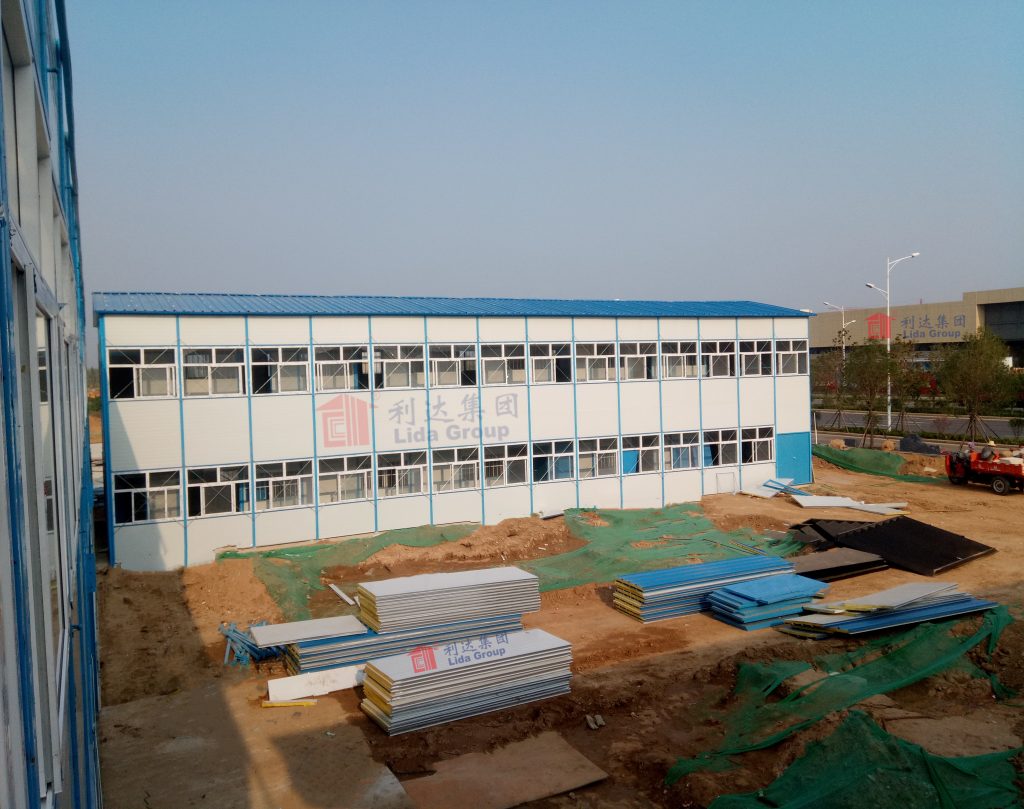
5. Adapting to Remote Site Realities: Installation, Maintenance, and Off-Grid Use
5.1 Tool-Free, Skilled-Labor-Free Installation
- Bolt-Together Design: All components connect via high-strength bolts that require only basic hand tools (wrenches, screwdrivers) to install. No welding, concrete, or specialized equipment is needed.
- Color-Coded Instructions: Assembly guides are printed in 12 languages (including Arabic, Swahili, and Russian) with color-coded labels on each component. A team of 4 unskilled workers can assemble a 20m² house in 6 hours—compared to 3 days for a traditional wooden hut.
- On-Site Support: For large projects, Lida sends a small team of technicians to train local workers in assembly. During a 2022 project in a Ugandan road construction site, 20 local workers were trained to assemble 50 houses in 2 weeks—creating local jobs and reducing reliance on foreign labor.
5.2 Low Maintenance: Minimizing Downtime
- Durable Materials: The steel cladding and anti-corrosion treatments require no repainting for 10 years. The waterproof roof (with a triple-layer design) needs only annual inspection—no replacement for 15+ years.
- Replaceable Components: Critical parts (e.g., window glass, door hinges) are standardized and easy to replace. Lida provides a small spare parts kit with each order, ensuring minor issues can be fixed on-site.
- Remote Monitoring (Optional): For industrial clients, Lida offers IoT (Internet of Things) sensors that monitor temperature, humidity, and structural stress. These sensors send alerts to a central dashboard, allowing maintenance teams to address issues before they become major problems. In a Canadian mining site, this system detected a small roof leak and prevented water damage—saving $5,000 in repairs.
5.3 Off-Grid Compatibility: Power and Water Independence
- Solar Panel Mounts: The roof is pre-fitted with mounting brackets for solar panels, making it easy to install off-grid power systems. A 20m² house with 2 solar panels (300W each) can power lights, a small refrigerator, and charging ports—enough for basic needs.
- Rainwater Harvesting: The roof’s slope and gutters can be connected to rainwater tanks, collecting up to 1,000 liters of water per month during rainy seasons. For dry regions, Lida offers optional water filtration systems that purify groundwater or river water.
- Composting Toilets: For sites with no sewage infrastructure, Lida’s hygiene modules can be equipped with composting toilets—eliminating the need for septic tanks and reducing water use.
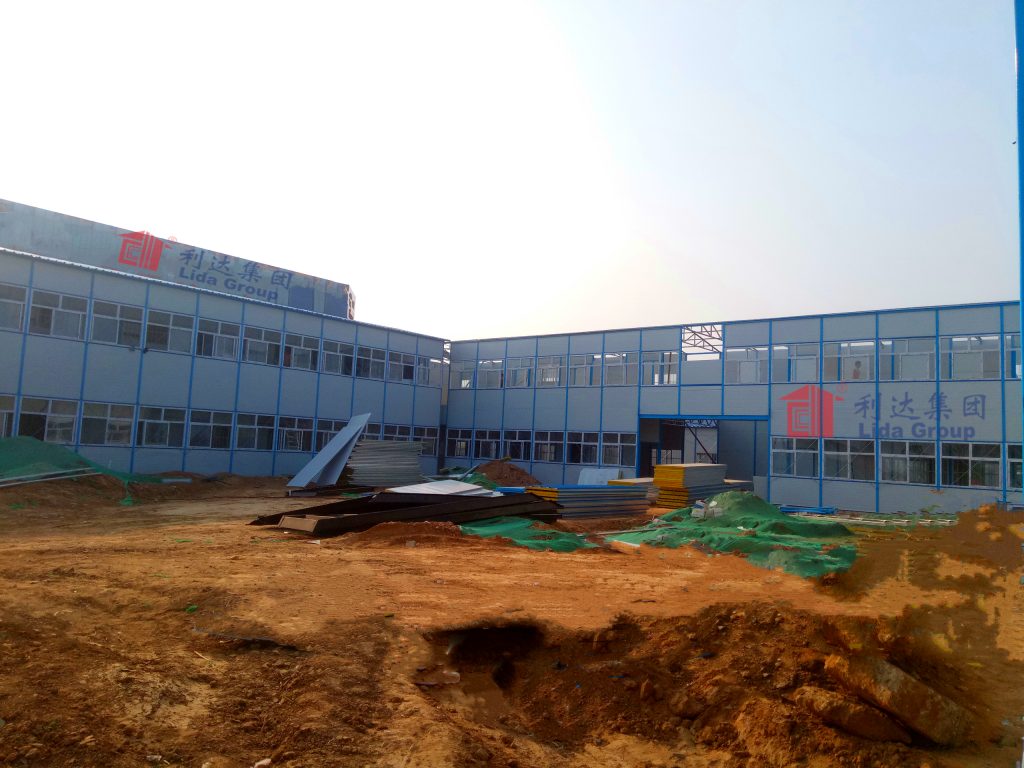
6. Case Studies: Transforming Remote Accommodation in Action
6.1 Case Study 1: Mining Worker Accommodation in Western Australia
Lida’s Solution: 200 units of 40m² sandwich panel houses with rockwool insulation, solar panel mounts, and hygiene modules. The houses were flat-packed and shipped to the site via truck.
Installation: 30 local workers (trained by Lida’s technicians) assembled all 200 houses in 3 weeks.
Results:
Worker turnover dropped to 8% in the first year.
Indoor temperatures stayed at 28–30°C in summer, compared to 38–40°C in tents.
The company saved \(240,000 annually in labor costs (due to lower turnover) and \)60,000 in energy costs (due to solar power).
6.2 Case Study 2: Road Construction Site in the Himalayas (Nepal)
Lida’s Solution: 50 units of 30m² houses with polyurethane insulation, composting toilets, and solar panels. The houses were shipped in flat-pack form via cargo plane to a remote airstrip, then transported by truck to the site.
Installation: 15 workers assembled the houses in 10 days, using only hand tools.
Results:
No structural damage or rot after 2 monsoon seasons.
Indoor temperatures remained at 18–20°C in winter, eliminating the need for expensive diesel heaters.
The company completed the highway 2 months ahead of schedule due to improved worker productivity.
6.3 Case Study 3: Disaster Relief Accommodation in South Sudan
Lida’s Solution: 1,000 units of 20m² houses with recycled EPS insulation (water-resistant), elevated foundations (to avoid floodwater), and simple hygiene facilities. The houses were pre-positioned in a Kenyan warehouse and shipped to South Sudan within 72 hours.
Installation: 200 local volunteers (trained by Lida and UNHCR staff) assembled 500 houses in 2 weeks.
Results:
95% of shelters remained dry during monsoon rains, compared to 40% of traditional tents.
No mold-related illnesses were reported, compared to a 15% rate in tent camps.
UNHCR saved $1.2 million compared to using high-end relief shelters, allowing funds to be redirected to food and medical supplies.
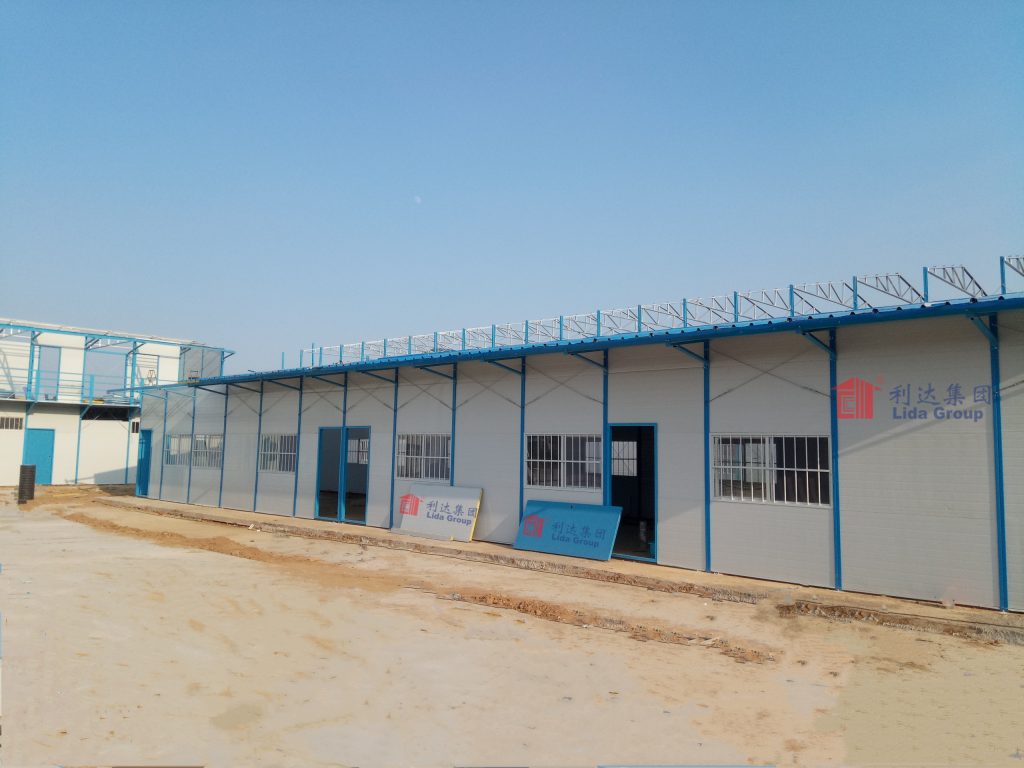
7. Industry Benchmarking: How Lida Outperforms Competitors
7.1 vs. Traditional Remote Accommodation
|
Feature
|
Lida Sandwich Panel Houses
|
Canvas Tents
|
Wooden Huts
|
|
Initial Cost (20m² unit)
|
$3,000
|
$1,500
|
$2,000
|
|
Lifespan
|
15–20 years
|
1–2 years
|
3–5 years
|
|
Annual Maintenance Cost
|
\(50–\)100
|
\(300–\)500 (replacements)
|
\(200–\)300 (repairs, rot)
|
|
Indoor Temperature Control
|
18–30°C year-round
|
30–45°C (summer), 0–10°C (winter)
|
25–40°C (summer), 5–15°C (winter)
|
|
Worker Productivity Impact
|
+15%
|
-20%
|
-10%
|
7.2 vs. High-End Modular Houses
|
Feature
|
Lida Sandwich Panel Houses
|
High-End Modular Houses
|
|
Initial Cost (20m² unit)
|
$3,000
|
\(15,000–\)25,000
|
|
Shipping Cost (100 units to Mongolia)
|
$45,000
|
\(112,500–\)150,000
|
|
Installation Time (per unit)
|
6 hours (unskilled labor)
|
24 hours (skilled labor)
|
|
Off-Grid Compatibility
|
Standard (solar, rainwater)
|
Optional (adds \(5,000–\)8,000)
|
|
Maintenance Cost/Year
|
\(50–\)100
|
\(200–\)300 (specialized parts)
|
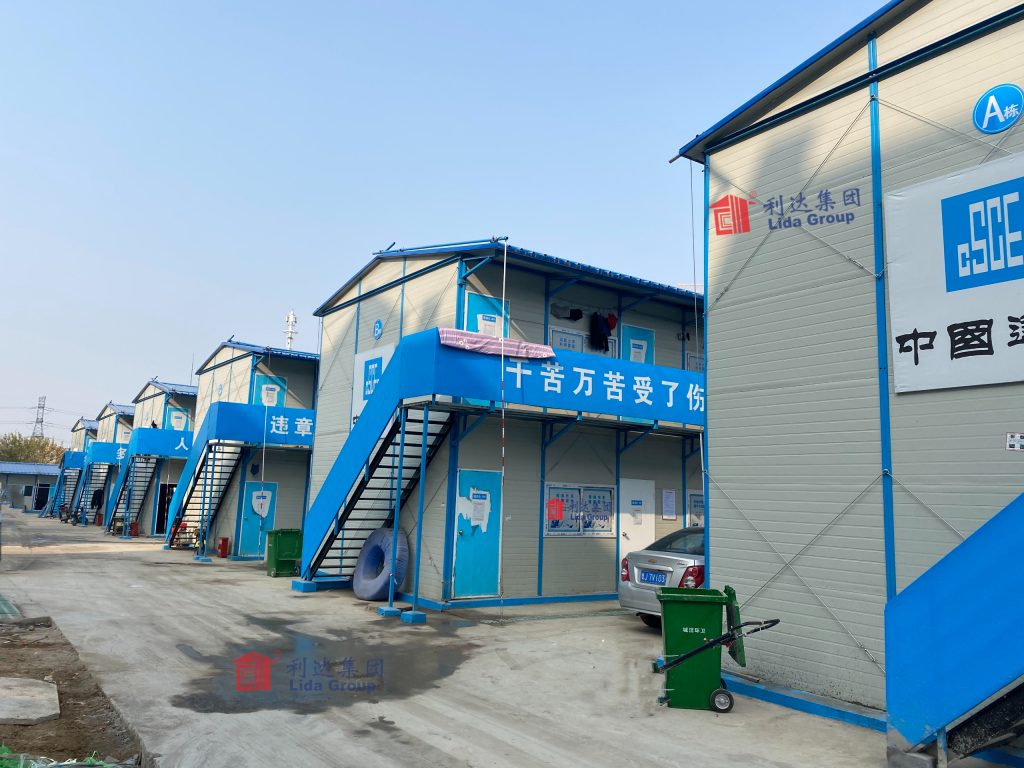
8. Future Innovations: Enhancing Remote Accommodation Further
- Bio-Based Insulation: Testing hemp fiber insulation (100% renewable, 30% lighter than rockwool) that reduces carbon footprint by 25% and costs 10% less.
- Smart Off-Grid Systems: Integrating AI-powered energy management systems that optimize solar power use and water conservation. These systems will reduce off-grid energy costs by 30%.
- 3D-Printed Components: Piloting 3D printing for custom parts (e.g., window frames, storage solutions) using recycled plastic. This will reduce production time by 20% and allow faster customization for unique site needs.
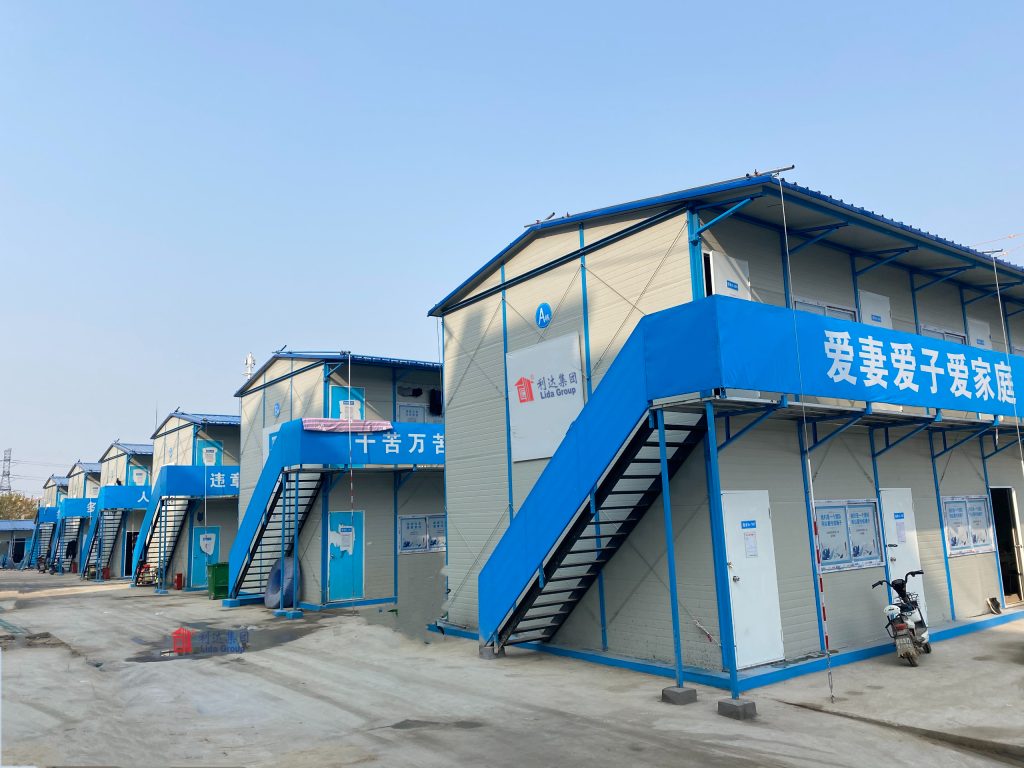
9. Conclusion
- Affordable: 30–50% cheaper than competing solutions, with low long-term maintenance costs.
- Comfortable: Maintaining livable temperatures year-round, with functional layouts and noise reduction.
- Durable: Withstanding extreme weather, pests, and wear—lasting 15–20 years.
- Adaptable: Fitting the unique needs of mining sites, construction projects, and disaster zones.

Related news
-
Why Disaster Relief Agencies Choose Lida Group's Prefab Mobile House for Rapid, Low-Cost Temporary Shelters
2025-10-24 14:14:15
-
Sustainable and Affordable: Lida Group's Temporary Prefab Building Solutions Feature Eco-Friendly Low-Cost Sandwich Panel Walls
2025-10-24 14:53:43
-
Lida Group's Advanced Engineering Makes Their Prefab Mobile House Both a Durable and Surprisingly Low-Cost Solution
2025-10-24 15:25:52
contact us
- Tel: +86-532-88966982
- Whatsapp: +86-13793209022
- E-mail: sales@lidajituan.com


